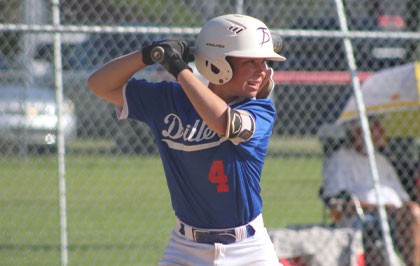

During baseball season last year, Matt and Karen H. of Chesapeake, VA, watched from the bleachers as their son stepped up to bat. R.J., 14, had been struggling with what they thought was a sports injury. That day, his limp was alarming. “He looked like someone who needed a hip replacement,” said Matt. That comparison was not very far from the truth. After testing, the family learned that R.J. had a rare, aggressive tumor. The growth was actually eating through the end of the bone of his leg, at the hip joint. He needed treatment, fast.
“In the day or two after the diagnosis, we spent some sleepless nights on the internet, looking for the most highly competent surgeon and medical team we could find,” said both Matt and Karen, a registered nurse.
All of our research pointed to James C. Wittig, MD,” Karen says. “He was four states away, at Morristown Medical Center. We did not hesitate to reach out.”
Dr. Wittig is chair of orthopedic surgery at Morristown Medical Center and medical director of orthopedic surgery, orthopedic oncology (cancer) and sarcoma surgery for Atlantic Health System. He confirmed R.J.’s diagnosis of “chondroblastoma.” Though it’s a rare tumor that does not spread throughout the body, it does grow. It was quickly destroying significant amounts of R.J.’s bone.
Amputation (removal of the leg) could have been the only option if the tumor continued to grow without being treated. Dr. Wittig and his team worked quickly. They met with the family during an online appointment, organized testing to be done near their home in Virginia, and set a date for surgery.
The five-hour surgery involved several critical steps: removal of all tumor cells so that the tumor would not grow back and then reconstruction of the joint. Dr. Wittig performed a special technique called “cryosurgery,” using liquid nitrogen to kill any microscopic cells. “Without cryosurgery, this kind of tumor comes back 60 to 80% of the time,” Dr. Wittig says. “But by using it, we know the risk of R.J.’s tumor coming back is less than 5%.”
Next, Dr. Wittig reconstructed the joint using donated bone and cartilage. The big challenge was making the ball part of the ball-and socket a smooth, round surface, Dr. Wittig says. This helps ensure a pain-free joint and limit risks of arthritis later in life.
Of more immediate importance to R.J., Dr. Wittig’s careful reconstruction will give him the chance to take part in the many sports that are so much a part of his life.
The surgery, done in October, was “a great success,” the family reports. R.J. is now back at home in Virginia with family.
“I expect that R.J. will fully recover by the spring,” Dr. Wittig says, “and after physical therapy, he can return to strenuous sports next fall.” R.J. will see Dr. Wittig regularly for several years.
R.J. says he’s “all in” for whatever it takes to get back to sports, from swimming to cross-country running and his first love, baseball. “You can tell that Dr. Wittig and everyone at the hospital had a vested interest to get us where we are today,” Karen says. “They cared about every detail.” Dad Matt agrees. “When we started our research for the best team for R.J., we wouldn’t settle for anything but the very best. We got it.”
Request More Information
Please use the form to request more information.
All fields are required.
Please note that this form is for North American residents only.